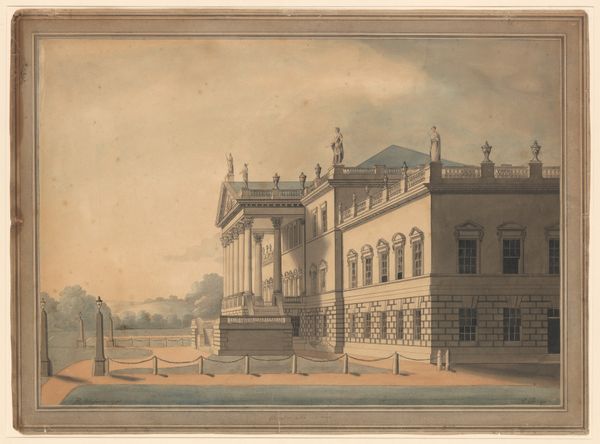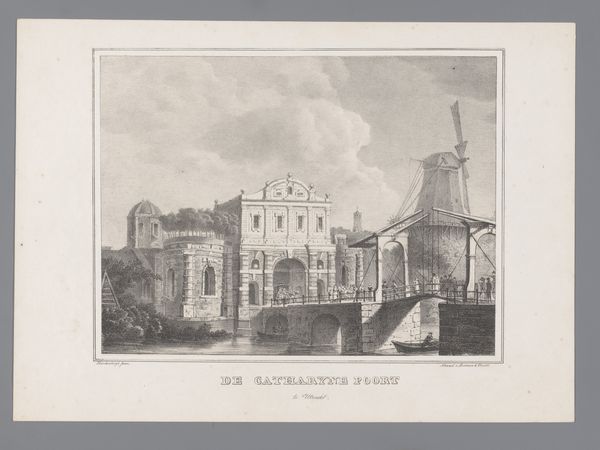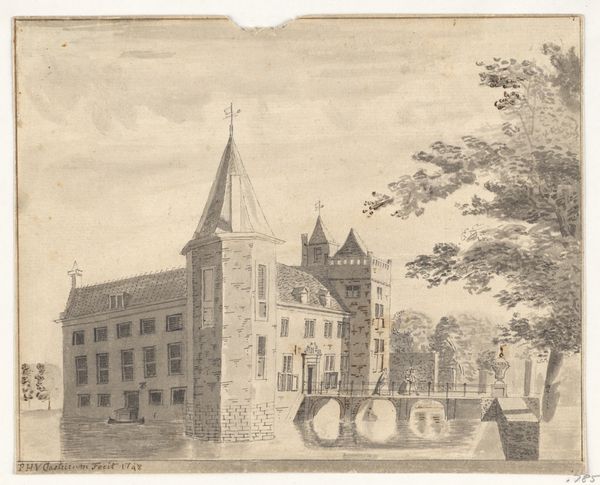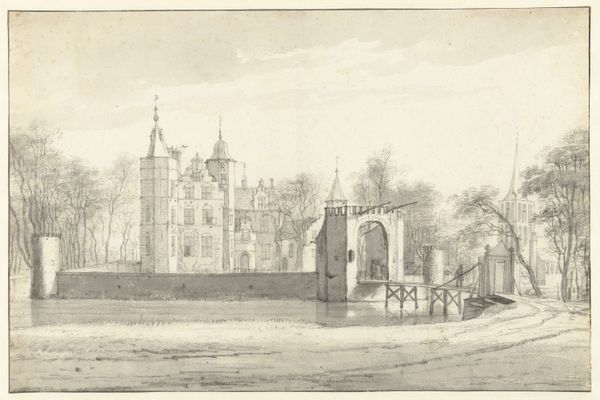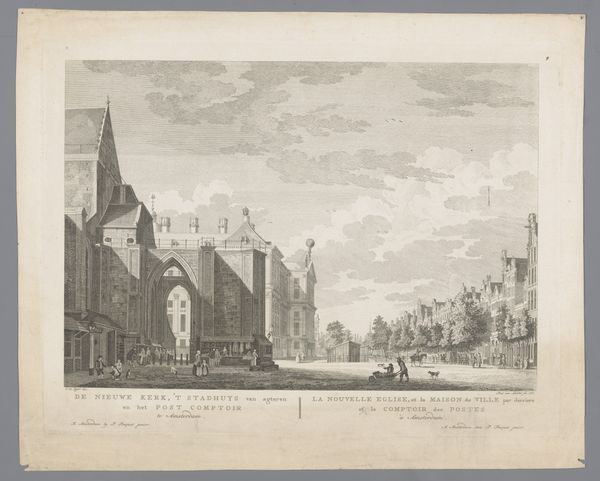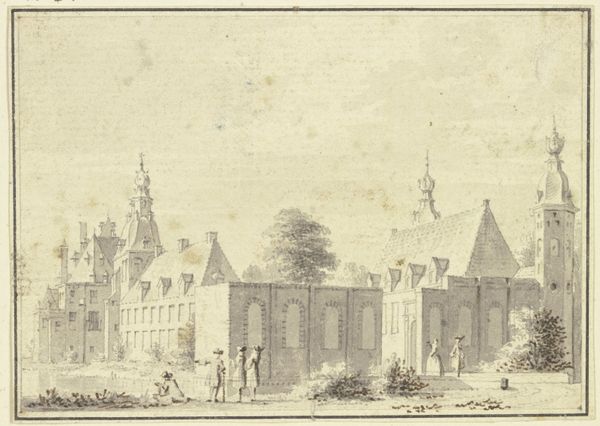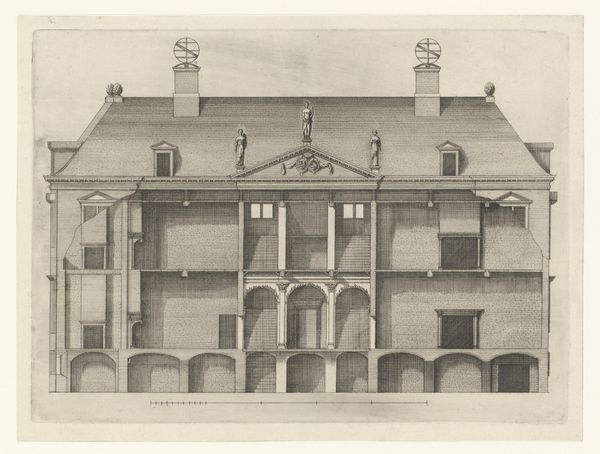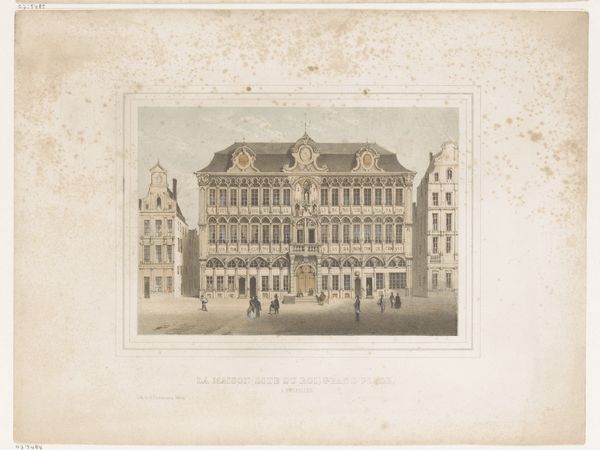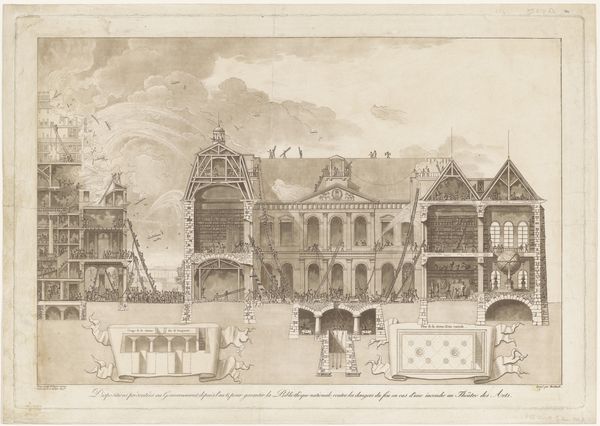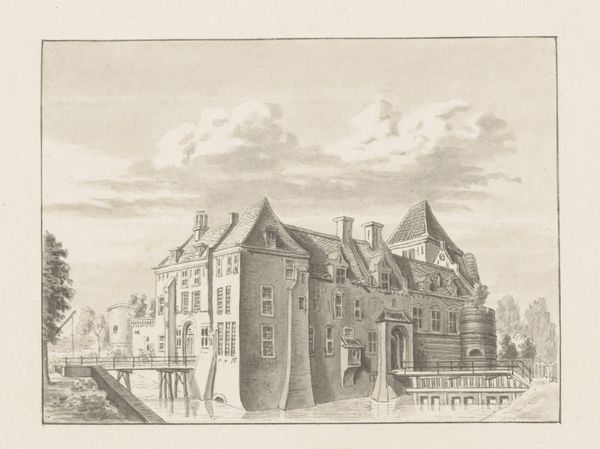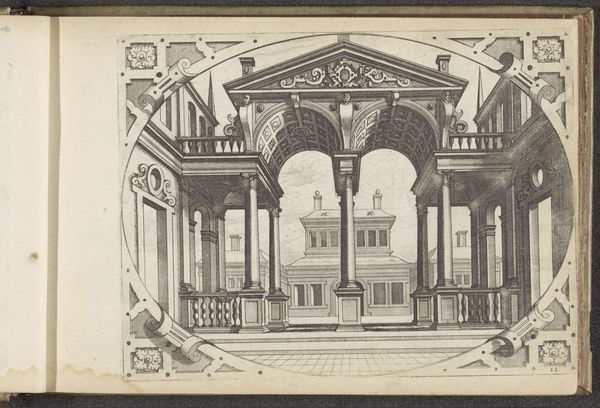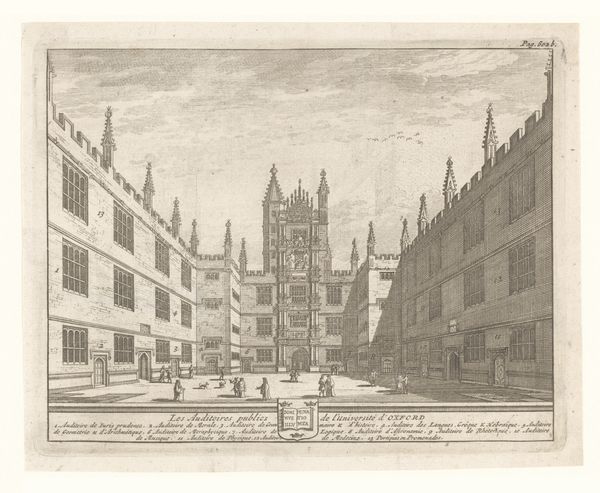
View of the Palazzo Pubblico (Palazzo Comunale), Piacenza 1820s
0:00
0:00
drawing, print
#
drawing
#
neoclacissism
# print
#
landscape
#
geometric
#
cityscape
Dimensions: 17 1/4 x 24 3/16 in. (43.8 x 61.5 cm)
Copyright: Public Domain
Curator: This is Giulio Aluisetti's "View of the Palazzo Pubblico (Palazzo Comunale), Piacenza," dating from the 1820s. It's a study in Neoclassical ideals rendered in ink and wash, currently held at the Metropolitan Museum. My initial response centers on its imposing geometrical form. The careful linear perspective, and precise articulation of architectural detail commands my attention. What are your first thoughts? Editor: Stark beauty! The drawing embodies, to me, an acute interest in not only representation, but also in the physical properties that facilitate representation. I am compelled to explore the quality of the paper, its subtle grain, and the layering of the wash, giving depth through careful modulation of tone. Curator: Indeed. The materiality supports the geometric composition. Look at how the artist frames the Palazzo—the careful arrangement of arches mirrors the structure above, which creates a dialogue within the design. Semiotically, those arched openings present a view of implied movement through history. Editor: Precisely! And the artist has seemingly focused on this tension between monumentality and lived existence by capturing workers walking within the building, subtly implying that stone has been extracted, transported, cut, and crafted by laborers. Do we know more about how this piece functions? Is it simply a depiction? Curator: Well, beyond a rendering of the city's governing edifice, consider how the ordered depiction communicates themes of civic virtue through rational design. It projects order through carefully calibrated proportions and considered placement. Editor: And this rendering provides a crucial window into how that labor of construction impacted both individual makers, their guild practices and material supplies sourced. Curator: Aluisetti emphasizes this relationship between geometric architectural intention and material substance; it invites consideration of building process in terms of line and mass. The careful geometry in a building facade, the ink embedded on laid paper. Editor: Such a well conceived interplay for considering history, no? I think my main takeaway remains the labor that manifests a civilization! Curator: An illuminating consideration given material properties of paper. Editor: An exchange materialized for viewing.
Comments
No comments
Be the first to comment and join the conversation on the ultimate creative platform.
